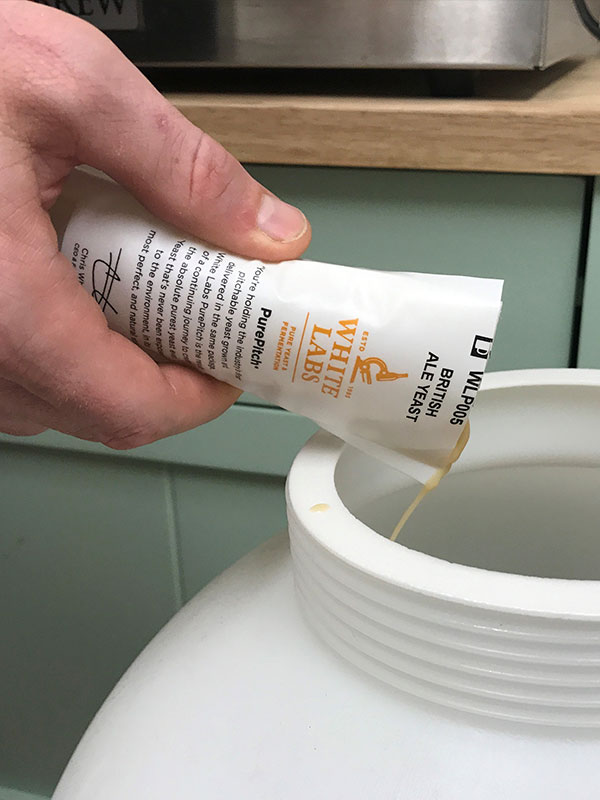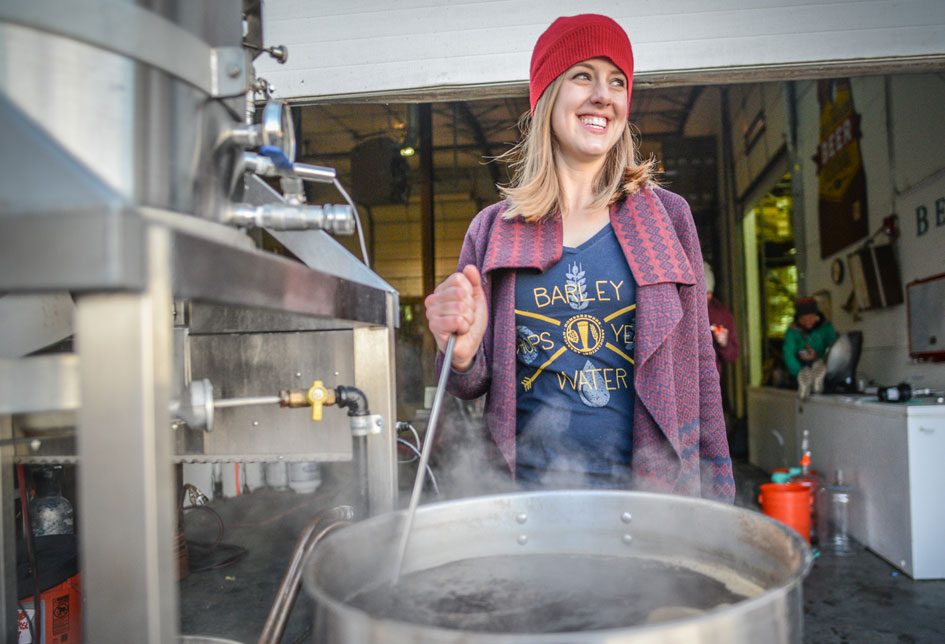
Yeast starters are used to increase cell counts from an initial lab-grown pitch, and if done properly, may result in double the growth in 24 hours. A wonderful feature of White Labs pitchable yeast is that the volume of yeast in their PurePitch® and vial packages can ferment up to 5 gallons (18.9 L) of wort at 1.048 or lower specific gravity without the need for a starter.
The general rule of thumb for pitch rates is 1 million cells per milliliter of wort per degree Plato of original extract. These rates are based on re-pitching and assume the yeast has already experienced the stressful conditions of fermentation. Lab-grown yeast is of much higher quality than the yeast at the bottom of a fermenter and, therefore, fewer cells are needed to ferment your wort. Here are a few attributes that contribute to the high quality of lab-grown yeast:
Grown in the presence of oxygen: Yeast needs oxygen to grow efficiently and produce additional cells with strong cell walls. These cell walls help keep yeast stress-tolerant, which is key for fermentation success. An oxygen-rich environment produces healthy and happy yeast.
Low-alcohol environment: Believe it or not, yeast prefers to be in a low- or no-alcohol environment. High levels of ethanol can be toxic to brewer’s yeast, which is why monitoring levels of ethanol production during lab propagation is important.
Pure culture: The more a yeast is handled, the higher the risk of contamination. This means non-sterile storage and propagation can lead to contamination and off-flavors in your finished beer. Lab-grown yeast benefits from being grown and handled in clean rooms, free from contaminating microorganisms.
High viability (95%+): Viability measures the fraction of live cells present in a given population. It is calculated by dividing the number of live cells by the total number of cells. Low viability can result in incomplete fermentation (or a stuck fermentation) and off-flavor production, including high levels of fusel alcohols, diacetyl, and acetaldehyde. Yeast with high viability is important to ensure a clean fermentation, correct attenuation, and proper flocculation. It is always important to check best-by dates to ensure your yeast is within the manufacturer’s suggested use-by date.
A starter may be appropriate for larger batch volumes, higher original gravities, or lager beers. For lagers, it is generally suggested that the pitch rate be multiplied by 1.5 or 2 times the pitch rate for an ale of the same original gravity. To avoid making a starter or pitching more yeast, some homebrewers pitch at a warmer initial temperature (62–68°F) and hold for 24 hours before cooling to the optimal fermentation temperature.
Below, you’ll find a chart of suggested pitch rate volumes based on starting gravity:
| For Batch Size: | up to 1.048 SG | 1.050-1.065 SG | Over 1.065 SG |
| 5 gallons (20 L) | 1 package, no starter | 1 package, 1 L starter | 1 package, 2 L starter |
| 10 gallons (40 L) | 2 packages, no starter | 1 package, 2 L starter | 1-2 packages, 4 L starter |
| 15 gallons (60 L) | 3 packages, no starter | 1 package, 3 L starter | 2 packages, 6 L starter |
There are many things to consider when pitching yeast, and while preparing a starter can be helpful for higher gravity beers, it may be unnecessary for average-strength wort.



Share Post